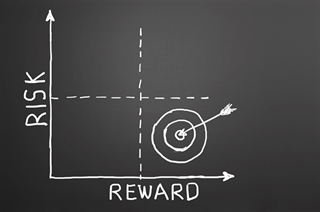5 Reasons Telematics (IoT) Projects Fail - Reason #1: The Real Cost of Telematics
5 Reasons Telematics (IoT) Projects Fail - Reason #1: The Real Cost of Telematics
 A quick Google search will bring up lots of articles and case studies talking about the amazing cost savings a company will see by investing in telematics for fleet management. However, those successes are oftentimes preceded by expensive oversights, technical shortcomings, confusing value propositions and logistical challenges. The technology is relatively new, and the world is still trying to understand the value of adopting telematics-based products. This five-part series will explain how to navigate the turbulent telematics solution space by highlighting the five key reasons why telematics projects fail, and cover both internal project management and customer facing challenges. This blog will provide some insights into the real cost of telematics.
A quick Google search will bring up lots of articles and case studies talking about the amazing cost savings a company will see by investing in telematics for fleet management. However, those successes are oftentimes preceded by expensive oversights, technical shortcomings, confusing value propositions and logistical challenges. The technology is relatively new, and the world is still trying to understand the value of adopting telematics-based products. This five-part series will explain how to navigate the turbulent telematics solution space by highlighting the five key reasons why telematics projects fail, and cover both internal project management and customer facing challenges. This blog will provide some insights into the real cost of telematics.
Every year, Gartner publishes their hype curve for telematics. According to their experts, popular functionality like real-time data analytics, 5G, driver monitoring systems, and more is still 2 to 10 years from being available to the mainstream consumer. That is when advanced telematics systems will be more of a commodity purchase. Until then, you will either have to hire a team to build and maintain a telematics system or find a partner that can help turn your vision into reality.
Source: https://www.sae.org/news/2020/09/2020-hype-cycle-for-connected-vehicles-and-smart-mobility
The good news is that there are a lot of very capable telematics solutions available today. They offer a library of charts and graphs to choose from. They can show you where your vehicles are located on a map in near real-time. Some can even update your vehicle’s software. These systems can provide you with peace of mind and financial savings. But will the savings offset the cost of the investment?
Telematics Hidden Costs and Pre-Planning
Let us go over three of the more costly “gotchas” when conceiving, implementing, and deploying your telematics solutions. In addition, we’ll discuss how to avoid them with pre-planning.
-
Data Overload
One trap that is easy to fall into is capturing too much data. There is a cost to collecting and storing data, but even more than that -- it’s overwhelming! It becomes difficult to search when the database gets filled with billions of data points. It can be common to think, “I’ll figure out how to capitalize on the data later, but there is no point in delaying collection.” The problem is many companies never get to the point of identifying a data strategy. Data is not king, information is, and information comes with a meaningful data strategy.
-
Value of Real-Time Data
Even when you have a well thought out data strategy, cellular costs can still spiral out of control. You might require some data to be available as close to real time as possible. For example, a dispatcher might want to see the location of all the vehicles in a fleet. We are used to information being readily available to help us make educated decisions or just get a sense that progress is being made. However, that can be an expensive approach with Internet of Things (IoT) projects.
If it is not an option to only transmit exceptions in the system, then it might make sense to optimize how the data gets communicated. This gets more technical, but keeping a socket connection open for more than a minute requires something called a keep-alive message. Sending a keep-alive every few seconds uses data but does not add value to a user. Analyzing web traffic might also reveal that messages to keep your clock updated are consuming bandwidth. Not all messages add value, but they all cost the same amount to transmit. Analyzing traffic patterns could save a lot of cellular data traffic, so it is a good idea to use a tool like Wireshark to capture and review what messages are going out over the wire.
-
Staff Efficiency Considerations
Telematics solutions rarely increase staff efficiency or reduce staffing needs. It can and probably should, but too often the details around “how'' get glossed over at the conception of a telematics project. The planning phase is the cheapest time to consider staffing goals. Consider involving a solution architect during the planning phase of the project to guide the strategy and articulate the tradeoffs of each goal. Here are some examples of tradeoffs to consider:
- Predictive maintenance vs scheduled maintenance vs on-demand maintenance
- Data science/machine learning vs Interviewing experts for value-added insights
- In-house support vs outsourced support services
- Early-to-market vs Full-featured product launch
Plan for these trade-offs, and decide how you will support each option. For example, hardware and software engineers are needed to support the telematics solution by integrating customer feedback and feature requests. Data Analytics skills might require a data scientist. The goal is to service equipment before it breaks when the solution sends a notification; therefore, it’s important to have technicians available to respond to these predictive maintenance events.
Telematics solutions can add a lot of value, but risk failure due to hidden costs and ill-conceived plans. These real costs are challenges that may take customers by surprise. Understand the challenges to avoid failure; and, pre-plan for data value and staffing needs to create a successful telematics solution project. The B2B telematics market is growing. Capitalize on that growth with a thorough plan for a successful telematics solution implementation. The right partner can help you address these challenges at the beginning of the project, ensuring you launch an effective and high ROI telematics solution on your vehicles.
Meet the Author

Jayson Pierringer is the Software Development Team Leader at HED, Inc., managing the software engineering team and the application engineers for telematics solutions. He has experience designing large-scale IoT solutions and loves to share his knowledge to help clients deliver value to their customers as they explore Internet of Things opportunities. He previously worked for Kohler Power Systems as an IoT Architect and as the Software Development Manager responsible for embedded controllers.
